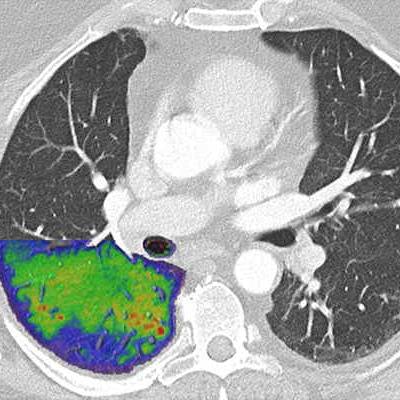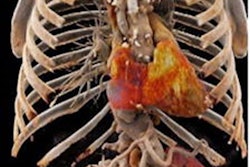
Photon-counting CT can help minimize radiation dose in abdominal imaging without sacrificing image clarity compared with dual-energy, dual-source CT (DSCT), according to German research presented on 27 November at the RSNA meeting.
The results are good news for cancer patients, since they often undergo multiple CT exams to diagnose and track disease.
"[Our study found that] photon-counting CT allows a significant dose reduction of up to 32% ... compared to a DSCT," wrote a team led by presenter Dr. Florian Hagen of Tübingen University Hospital in Germany.
CT is the backbone of oncologic imaging, Hagen told session attendees. Its advantages include wide availability, high acceptance among patients (in part because the exam tends to be short), relatively low cost, and excellent spatial resolution. But one major limitation of the modality is the radiation it imparts, which is especially concerning for patients who must undergo repeated CT exams during the course of cancer diagnosis, tracking, and treatment.
Photon-counting CT has shown promise for producing clinically useful images at lower radiation doses due to its capacity to directly convert x-ray photons into electronic signals rather than conventional CT's two-step process of converting x-rays to light, then to an electronic signal, Hagen said.
He and his colleagues sought to compare photon-counting CT and conventional contrast-enhanced CT (CECT) for abdominal imaging through a study that included 70 cancer patients. Each had an initial CECT exam performed on a dual energy DSCT and then a follow-up photon-counting CT study (median time interval between the two scans was 4 months). The team compared the radiation doses of the two types of exams, measuring the dose index (CTDIvol), dose length product, and size-specific dose estimation. They also evaluated objective and subjective measurements of image quality scored by two emergency radiologists.
Lesion conspicuity was significantly higher on photon-counting CT compared to DSCT, the team found.
| Comparison of DSCT to photon-counting CT for radiation dose reduction | ||
| Measure | DSCT | Photon-counting CT |
| CTDI | 14.11 mGy | 7.98 mGy |
| Dose length product | 693.61 mGy*cm | 393.13 mGy*cm |
| Size-specific dose estimation | 14.63 mGy | 9.98 mGy |
The size-specific dose estimation results translated into a 32% reduction in radiation dose, Hagen noted.
There are a few obstacles to widespread use of photon-counting CT, including its expense, and a current lack of post-processing applications, Hagen told AuntMinnieEurope.com. But the technology's benefits provide plenty of motivation to resolve these issues.
"Photon-counting detector-CT enables oncologic abdominal CT with a significantly reduced dose while keeping image quality similar to 2nd-generation DSCT," he concluded.



















